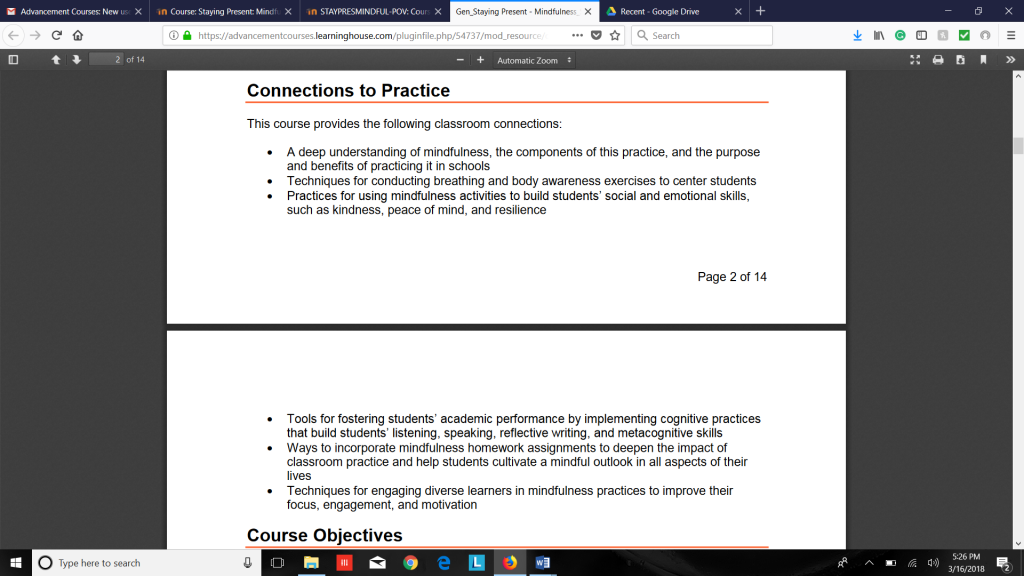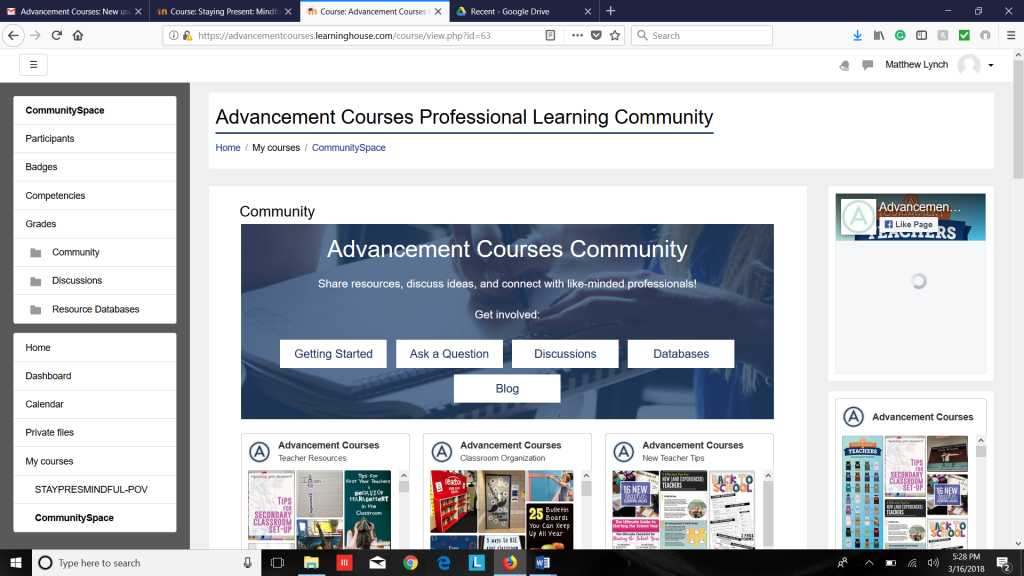Have you ever thought about the kinds of things that you accomplish before the school bell rings to signal the end of the day? In all probability, you would have run from one end of the playground to another some fifteen times if not more, handled disputes and power struggles and shouted louder than the football coach on the field. Unfortunately, a teacher does not have the luxury of checking into a spa for a few weeks to remove all the stress that is causing them to grow old faster. So, what can the modern teacher do to stay calm, while so much chaos is happening around them? One word. Mindfulness. Yes, mindfulness.
What exactly is mindfulness? Mindfulness is a set of strategies that have been used for several millennia to help people be “present” and in the moment, instead of focusing on distractions and stressors. Mindfulness is accomplished by calming the mind and becoming more aware of your emotions, cognitions, and body. Staying “present” helps you to increase your focus, improve your socio-emotional intelligence, and enhance your physical health. Studies have shown that incorporating mindfulness techniques and strategies in the classroom provides several teaching and learning benefits. Students and teachers are calm, at peace, and become in full control of their mind, body, and soul, which allows them to have more success in the classroom.
Recently, I had the pleasure of demoing an online professional development course entitled “Staying Present: Mindfulness for Better Teaching and Learning,” which teaches the practice of mindfulness to educators. The class was created by Advancement Courses, an innovative education development company that provides continuing education to educators. In this course, I learned a plethora of tips and strategies for implementing mindfulness in the classroom. I was able to work at my own pace and felt at ease as I participated in activities that are designed to help educators center their body, mind, and spirit, and handle stressful moments.
I appreciate the care and attention that was put into developing this course. Advancement Courses only employs authors who are expert teachers with extensive classroom experience. They design each course to be meaningful, engaging, and classroom applicable. Classes are not just filled with innovative techniques and perspectives, but also show what these tools look like in practice.
I love how the syllabus includes a section entitled “Connections to the Classroom” that explains how the course plans to help you turn theories of mindfulness into sound professional practices. Also, the “Course Objectives” section was a standout, as it does a superb job of stating the skills that educators will attain by taking the course. This is standard information that all online courses have, but you wouldn’t believe how many education companies do a horrible job of writing course objectives.

Another bonus is that all courses are led by facilitators with a proven track record of supporting teachers across content areas and grade levels. Facilitators help guide you through your course by answering questions, offering detailed feedback on assignments, and more. They have a deep understanding of national standards like the Common Core and Next Generation Science Standards, and I do not doubt that their feedback is constructive, research-based, and thorough. If you have technical or course-related questions, your facilitator and the support team are available to help.
The coolest feature of the course was the community space, which gives you access to a professional learning community comprised of like-minded professionals across the world. It’s a place for you to share resources, explore innovative ideas, and connect with other educators. Whether you’re looking to incorporate new teaching strategies, problem solve or enhance your lesson plans; it’s your chance to interact and learn from your peers. You can access this space via the “Community” link at the top of the eclassroom in any course.
The community space includes discussion forums where you can engage with other educators in ongoing conversations, share and get feedback on ideas, and post questions. It also has a searchable database of articles, blogs, websites, videos and other contributed content and includes integrated sharing and social tools to make participating and extending the conversation easy. The community space also provides social networking opportunities via Facebook, Pinterest, etc.

I love the fact that the course is not tied to a semester, and can be taken anytime, anywhere – with up to six months to complete. This gives busy educators the opportunity to expand their knowledge at a pace that works for them. Also, you can complete the course in two formats, online and print. If you choose to take an online course, you’ll analyze real classroom footage of best practices in mindfulness and engage in interactive tasks. You can complete your online coursework on a variety of digital devices, even smartphones, and tablets. If you choose a print course, you’ll delve deeply into a selection of texts and multi-media to gain a greater understanding and learn new mindfulness strategies. No matter what format you choose, I know you’ll enjoy the course and be able to start implementing what you have learned immediately into your practice. The courses are available in non-credit or grad-level credit versions, and even come with a transcript.
After I completed my demo of the course, I felt empowered. I was confident that I had the tools that I needed to create an energized, interconnected, and kind classroom culture where every student is engaged, motivated, and passionate about learning and can stay present even in stressful situations. Thanks, Advancement Courses. I wholeheartedly recommend this course to all classroom teachers, administrators, paraprofessionals, etc. who are striving to live a stress-free personal and professional life. You won’t be disappointed.





